In this study, a numerical framework was developed in order to analyze the swelling properties, mechanical response and fixation strength of swelling bone anchors. Using this framework, fully porous and solid implants, along with a novel hybrid design (consisting of a solid core and a porous sleeve), were modelled and studied. Free swelling experiments were conducted to investigate their swelling characteristics. The finite element model of swelling was validated using the conducted free swelling. Compared with the experimental data, results obtained from the finite element analysis proved the reliability of this framework. Afterwards, the swelling bone anchors were studied embedded in artificial bones with different densities with two different interface properties: considering frictional interface between the bone anchors and artificial bones (simulating the stages prior to osteointegration, when the bone and implant are not fully bonded and the surface of the implant can slide along the interface), and perfectly bonded (simulating the stages subsequent to osteointegration, when the bone and implant are fully bonded). It was observed that the swelling considerably decreases while the average radial stress on the lateral surface of the swelling bone anchor surges in the denser artificial bones. Ultimately, the pull-out experiments and simulations of the swelling bone anchors from the artificial bones were conducted to look into the fixation strength of the swelling bone anchors. It was found that the hybrid swelling bone anchor exhibits mechanical and swelling properties close to those of solid bone anchors, while also bone ingrowth is expected to happen, which is an integral factor to these bone anchors. Furthermore, further in-vitro experiments showed the refixation capability of such swelling bone anchors, an edge that is significantly important over the commercial metal bone screws. Concurrently, the swelling bone anchors were inserted in the sheep’s spinal cord for the purpose of clinical research, along with the non-swelling bone anchors as control samples. 3-month and 6-month results from the in-vivo studies also exhibited the potential of the design to stimulate bone-ingrowth into the anchor, as well as considerable fixation strength, which is comparable with that of bone screws.
This work is a collaboration between Dr. Siegler‘s lab (Biomechanics Lab, Drexel University), Dr. Schaer‘s lab (VMD’s lab, University of Pennsylvania), and our lab (MCMB Lab, Drexel University). Graduate and Undergraduate students, including Amir Sadighi, Moein Taghvaei, and Mehrangiz Taheri, were leading our effort.
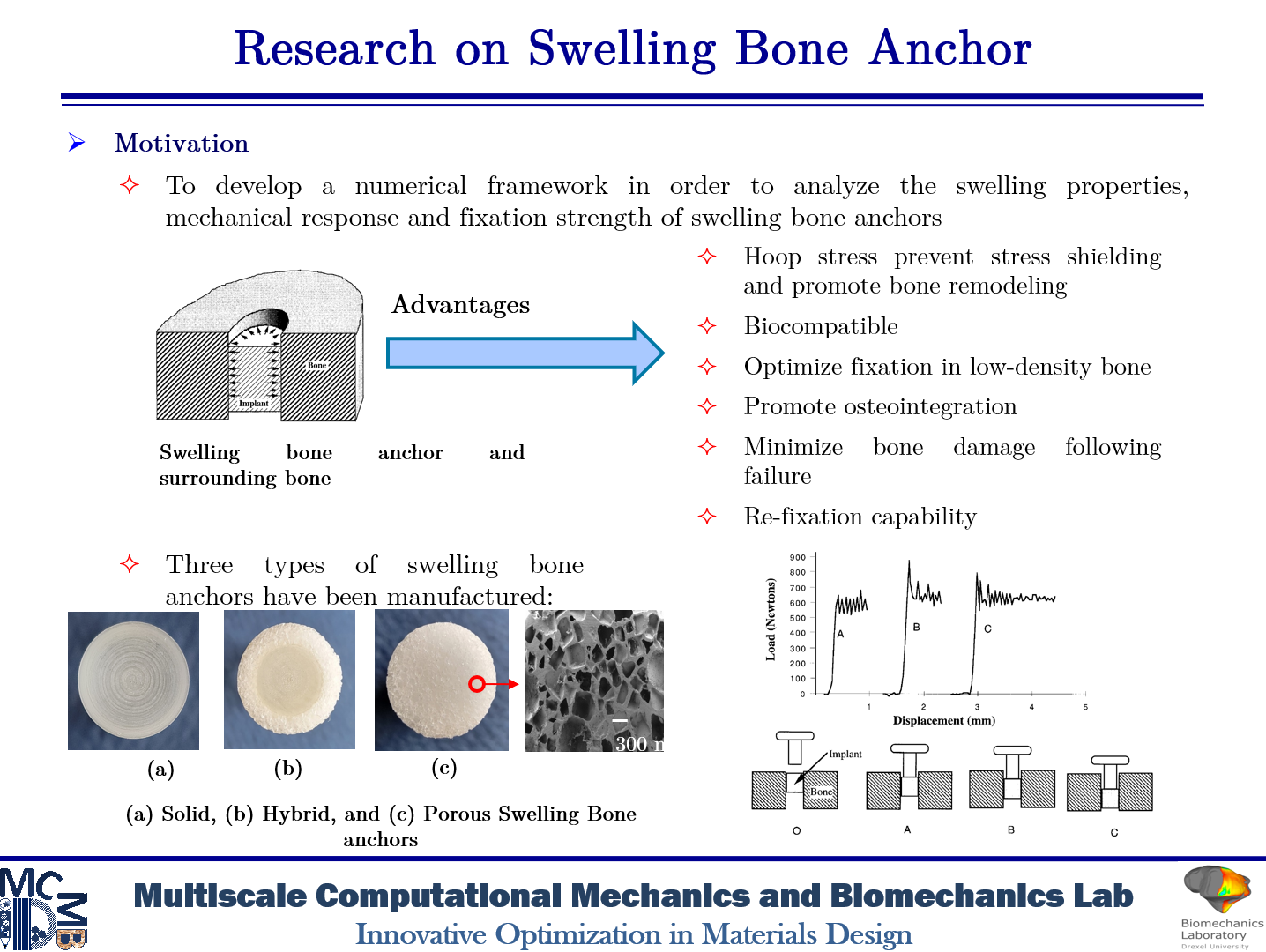
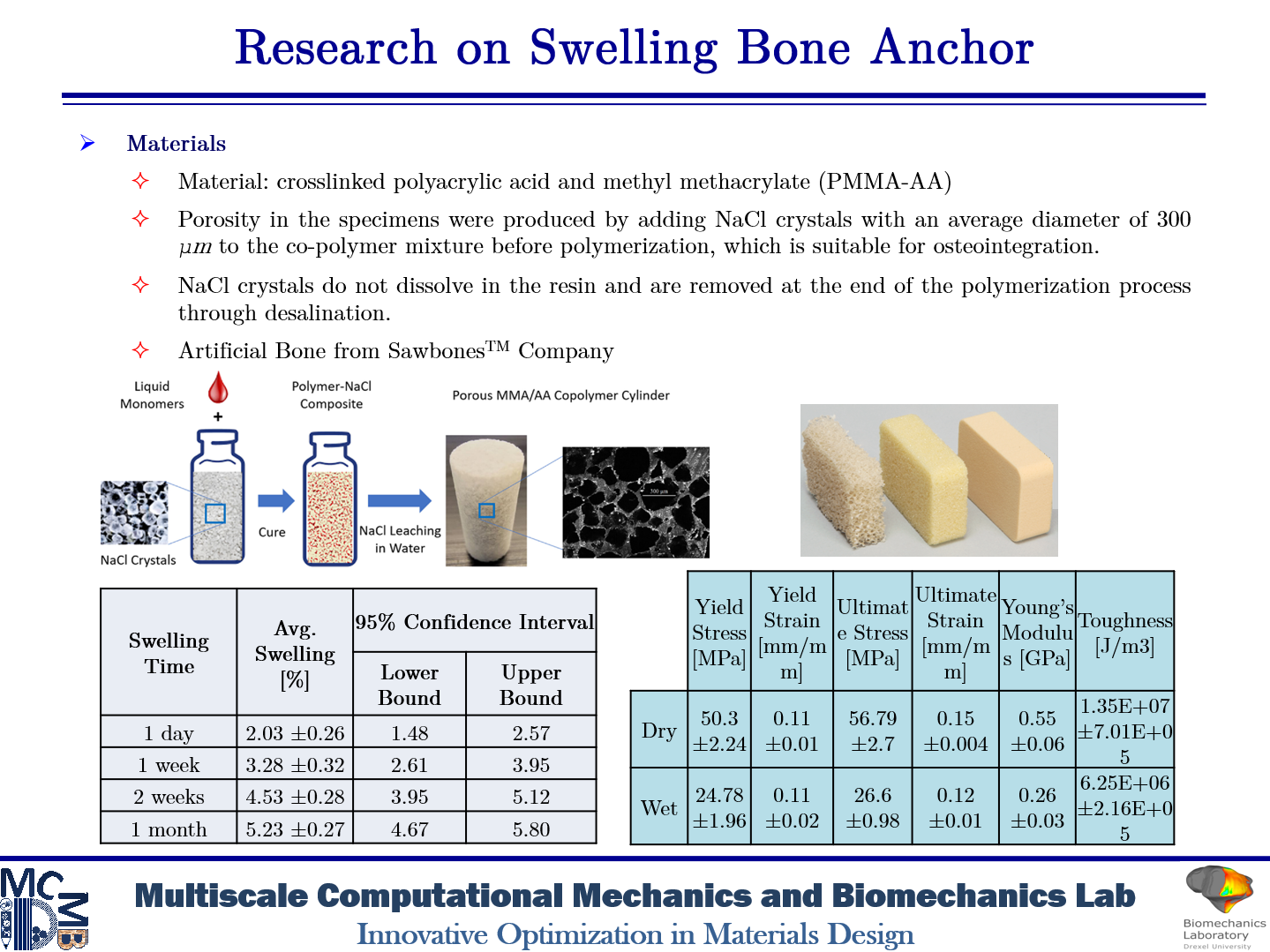
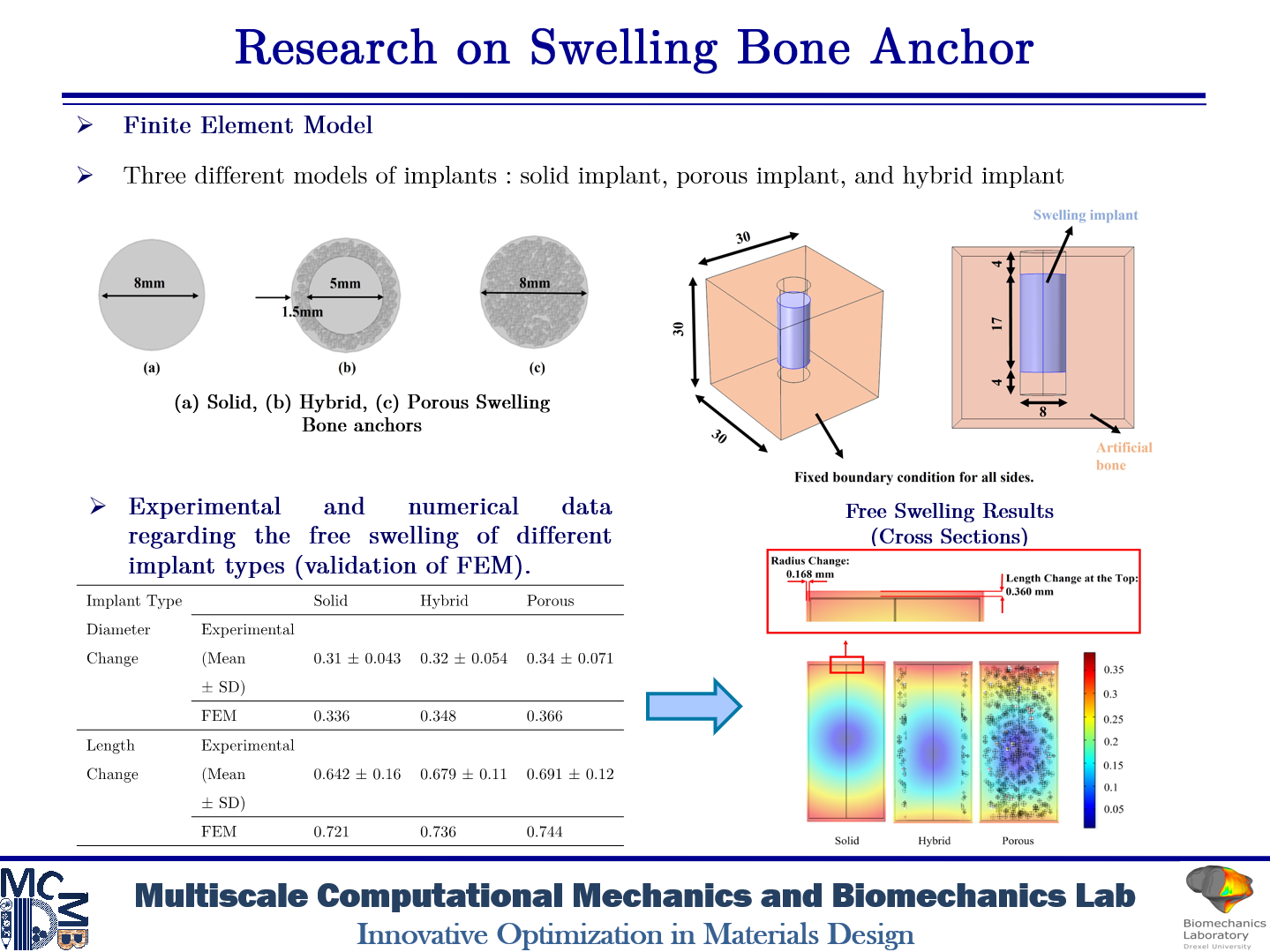
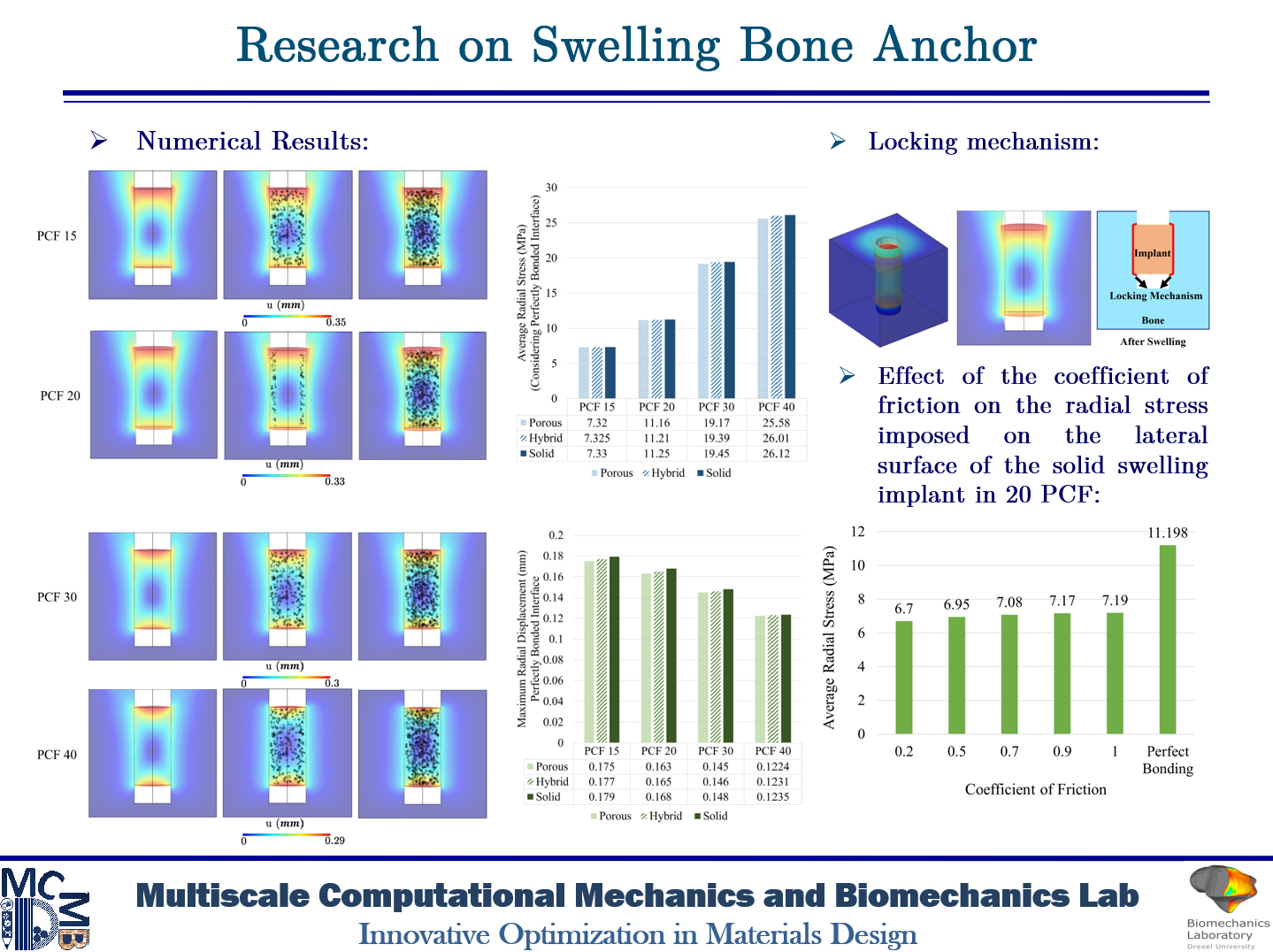
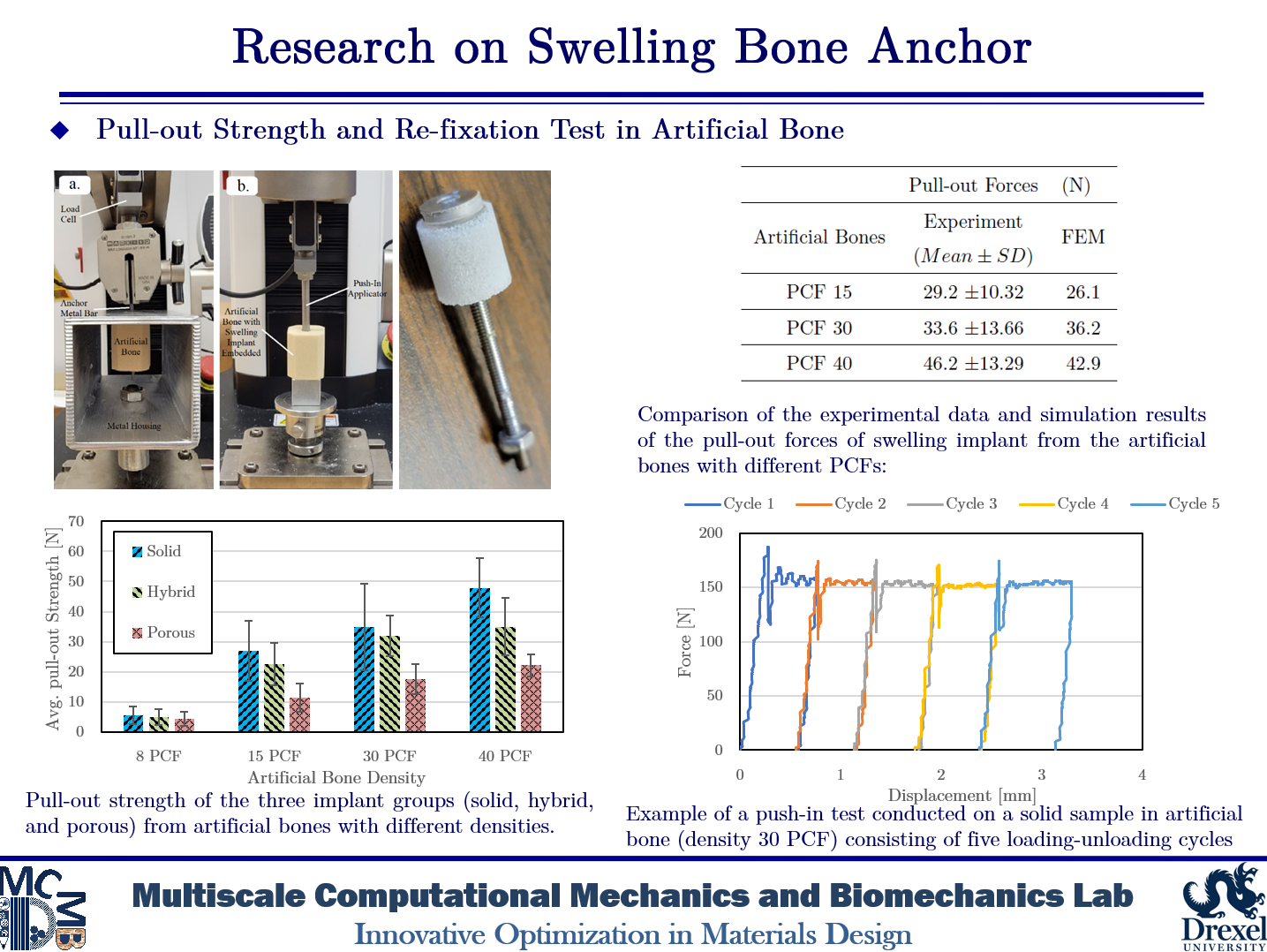
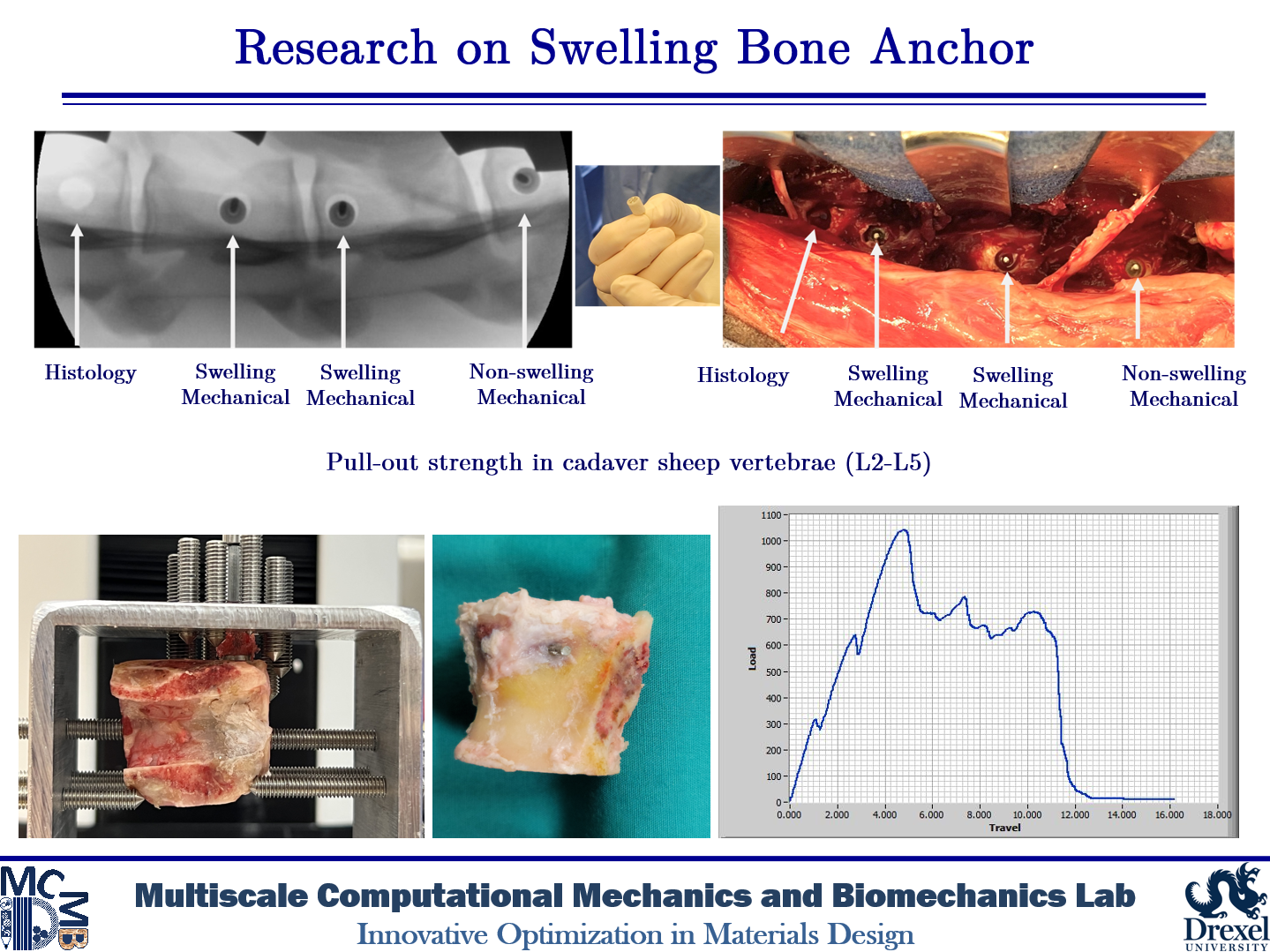
Related Publications
-
- Siegler, S., Taghvaei, M., Zegarski R., Palmese G., Mathew R., Schayes J., Schaer, T., and Najafi, A.R., “A porous swelling copolymeric material for improved implant fixation to bone” Journal of Biomedical Materials Research Part B: Applied Biomaterials, vol. 111, p 1342-1350, 2023.
-
- Sadighi, A., Taghvaei, M., Taheri, M., Oeth, D., Siegler, S., Schaer, T., and Najafi, A.R., “Numerical analysis of the mechanical response of novel swelling bone implants in polyurethane foams” Journal of the Mechanical Behavior of Biomedical Materials, vol. 143, 105871, 2023.
-
- Taghvaei, M., Taheri, M., Sadighi, A., Zegarski, R., Schaer, T., Palmese G., Najafi, A.R., and Siegler, S., “Fixation strength of swelling copolymeric anchors in artificial bone” Journal of Orthopaedic Research, 2023; 1-8, doi:10.1002/jor.25770.
